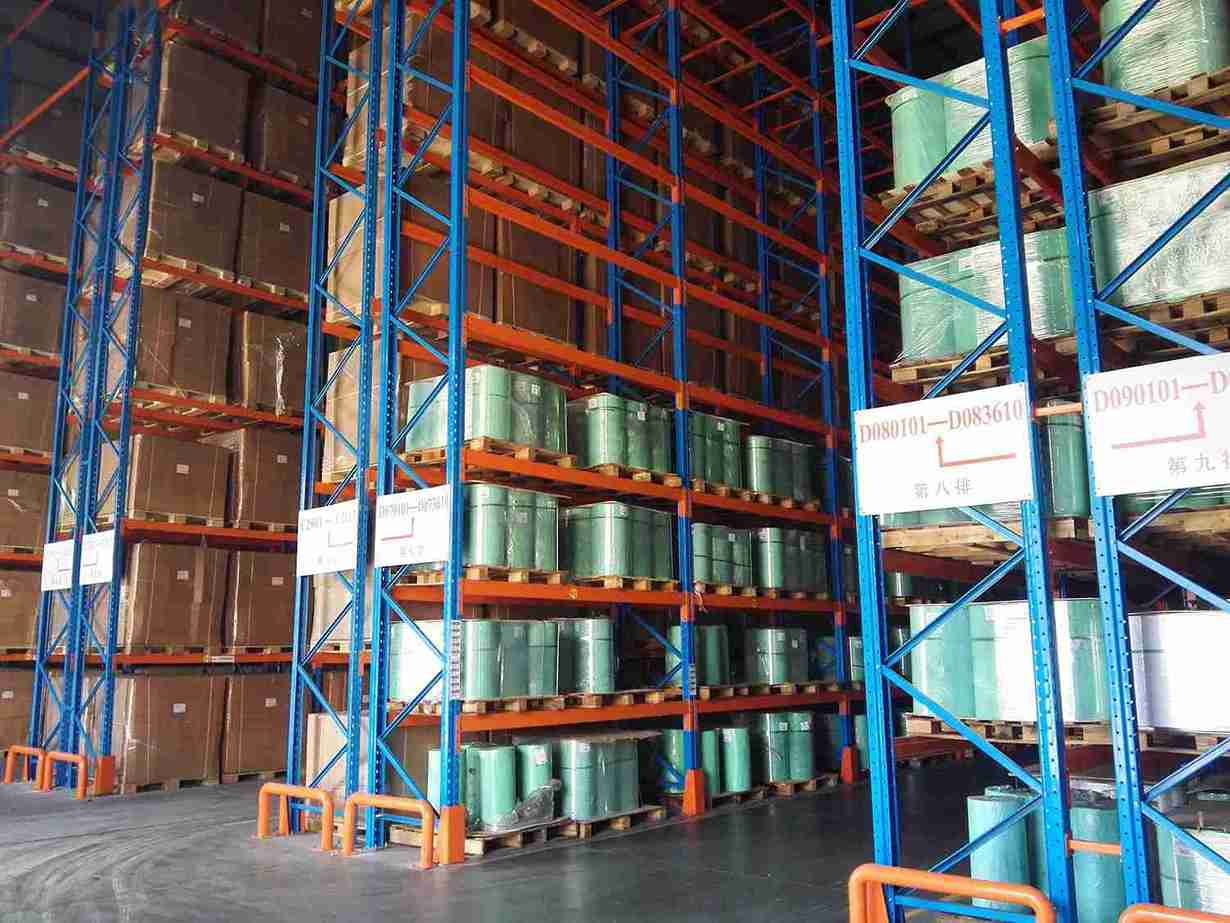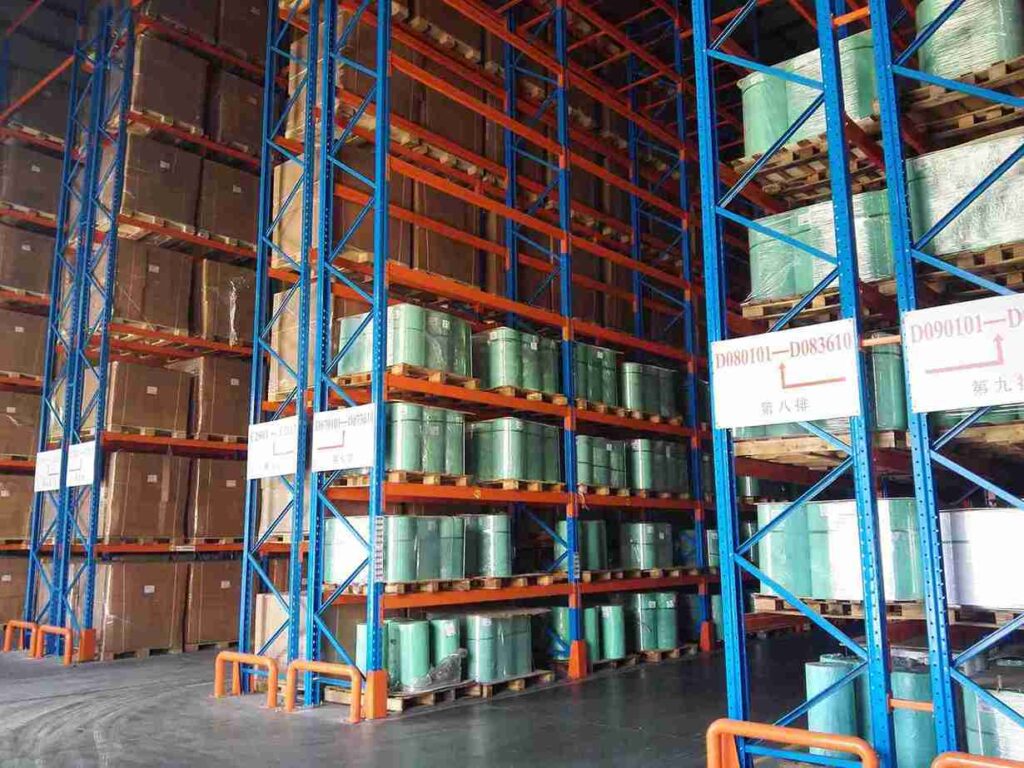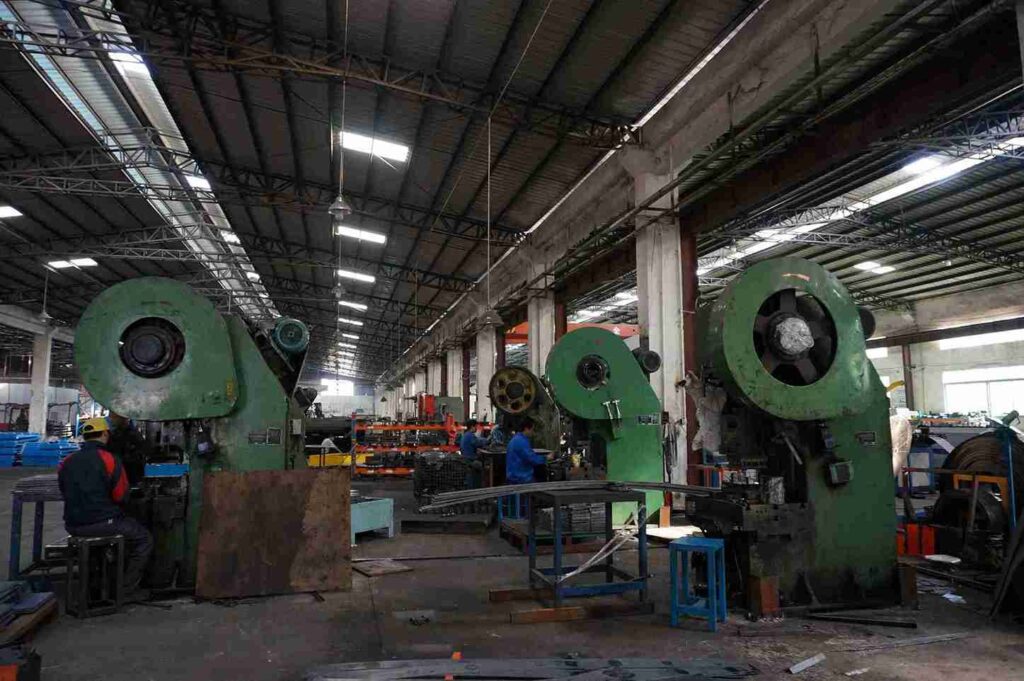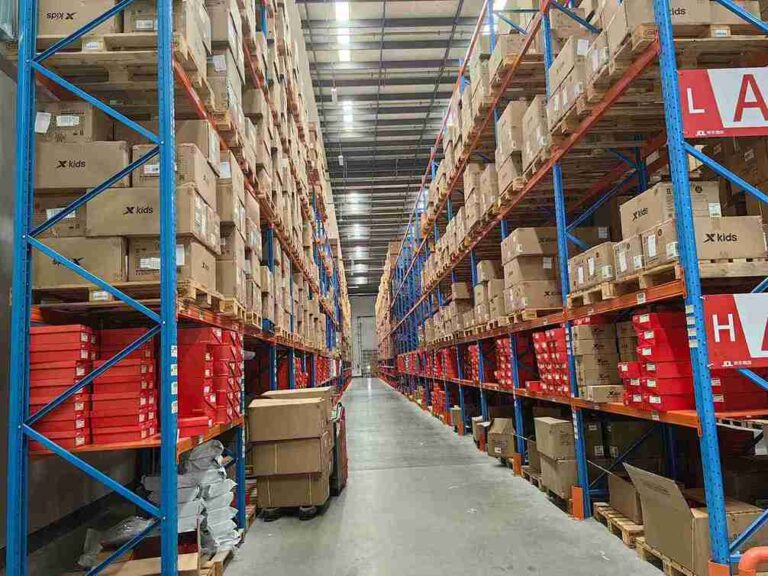📐 "First 50 Enterprise Queries Get Custom 3D Warehouse Design" Plan

OSHA Compliant Racking Solutions: Engineered for Uncompromising Safety & Peak Operational Efficiency
In the dynamic landscape of global warehousing and logistics, storage racking systems represent far more than simple metal structures—they form the critical backbone supporting operational integrity, workforce safety, and business continuity. The complex interplay between storage infrastructure and regulatory compliance demands specialized expertise, particularly when navigating the specific OSHA racking requirements that govern warehouse safety standards.
At [Geelyracks/Jiliracks], the engineering and implementation of comprehensive OSHA compliant racking solutions transcends basic compliance, establishing a foundational framework for sustainable operational excellence. This definitive guide explores the multifaceted nature of OSHA racking requirements, demonstrating how proper adherence transforms regulatory mandates into tangible business advantages across diverse operational environments in Southeast Asia, the Middle East, Africa, and Latin America.

<h2>The Critical Foundation: Understanding OSHA Racking Requirements in Modern Warehousing</h2>
The Occupational Safety and Health Administration’s framework for storage systems represents one of the most frequently misunderstood regulatory landscapes in industrial operations. Many organizations perceive OSHA racking requirements as simple bureaucratic hurdles rather than the sophisticated safety engineering protocols they truly represent. This fundamental misunderstanding creates significant operational vulnerabilities that extend far beyond regulatory penalties.
<h3>The Evolution of Storage Safety Standards</h3>
Contemporary OSHA racking requirements have evolved through decades of industrial incident analysis, engineering research, and technological advancement. What began as basic guidelines for load management has matured into a comprehensive system of structural engineering principles, operational protocols, and maintenance mandates. These evolving OSHA racking requirements now encompass everything from initial structural design and installation specifications to ongoing inspection protocols and employee training standards. The progressive nature of these standards means that compliance isn’t a static achievement but rather a continuous commitment to safety excellence.
<h3>Global Interpretation of Safety Standards</h3>
While specifically codified in United States regulations, the principles underlying OSHA racking requirements have become the de facto global standard for warehouse safety excellence. International operations frequently adopt these standards as benchmark protocols, particularly in regions developing their own regulatory frameworks. The universal applicability of core OSHA racking requirements demonstrates their fundamental validity across diverse operational contexts and geographic locations.

<h2>Beyond Compliance: The Strategic Business Imperative of OSHA Racking Requirements</h2>
Organizations that view OSHA racking requirements merely as compliance obligations fundamentally misunderstand their strategic value. Proper implementation of these standards delivers measurable competitive advantages that directly impact operational performance and financial outcomes.
<h3>The Comprehensive Cost of Regulatory Non-Compliance</h3>
The financial implications of failing to meet OSHA racking requirements extend far beyond regulatory fines. A single racking collapse incident triggers a cascade of direct and indirect costs that can cripple operational viability:
-
Immediate Regulatory Penalties: Significant fines imposed for violations of specific OSHA racking requirements, with penalties escalating dramatically for willful or repeated violations
-
Catastrophic Asset Destruction: Complete loss of stored inventory and structural components in collapse scenarios
-
Operational Disruption Costs: Facility shutdowns that halt shipping, receiving, and production activities
-
Insurance Consequences: Dramatic premium increases following safety incidents and potential coverage denials
-
Workforce Impact: Injury-related costs including workers’ compensation claims, litigation expenses, and productivity losses
-
Reputational Damage: Long-term erosion of customer and partner confidence following publicized safety failures
<h3>The Efficiency Dividend of Exceeding Standards</h3>
Organizations that implement OSHA racking requirements as minimum benchmarks rather than maximum targets discover significant operational benefits:
-
Optimized Spatial Economics: Properly engineered systems maximize cubic storage efficiency while maintaining structural integrity and accessibility
-
Enhanced Material Flow Dynamics: Compliant designs facilitate smoother material movement through properly dimensioned aisles and logical load placement strategies
-
Reduced Operational Waste: Minimized product and equipment damage through appropriate load management and impact protection
-
Predictable Operational Continuity: Engineered reliability that eliminates unexpected downtime from racking failures or emergency repairs
<h2>Deconstructing the Standards: Technical Implementation of OSHA Racking Requirements</h2>
The practical application of OSHA racking requirements demands specialized technical expertise across multiple engineering disciplines. Successful implementation requires understanding both the letter and the spirit of these critical safety standards.
<h3>Structural Engineering Principles in Storage Systems</h3>
The fundamental OSHA racking requirements governing structural integrity encompass several critical technical considerations:
-
Load Capacity Certification: Every component must demonstrate certified capacity ratings through rigorous engineering analysis and testing protocols
-
Dynamic Load Considerations: Accounting for seismic activity, forklift impact forces, and other dynamic variables in structural calculations
-
Material Specifications: Utilizing appropriate steel grades and protective coatings for specific environmental conditions
-
Connection Engineering: Designing beam-to-column connections that maintain integrity under anticipated load and impact scenarios
<h3>Operational Safety Protocols</h3>
Beyond structural concerns, OSHA racking requirements establish comprehensive operational protocols:
-
Clearance and Accessibility Standards: Maintaining proper clearances for sprinkler systems, aisle accessibility, and emergency egress
-
Load Management Procedures: Establishing protocols for proper load placement, weight distribution, and height restrictions
-
Documentation and Reporting Systems: Maintaining accurate records of inspections, incidents, and maintenance activities
-
Employee Training Requirements: Ensuring workforce competency in safe racking practices and hazard recognition
<h2>The Engineering Methodology: Translating OSHA Racking Requirements into Operational Reality</h2>
Successfully implementing OSHA racking requirements requires a systematic engineering approach that considers both universal principles and site-specific variables.
<h3>Comprehensive Facility Assessment Protocol</h3>
The initial phase of any compliant racking project involves meticulous assessment of existing conditions and operational parameters:
-
Structural Evaluation: Detailed analysis of existing racking conditions, floor integrity, and building interface points
-
Operational Analysis: Review of material handling workflows, inventory profiles, and throughput requirements
-
Environmental Assessment: Evaluation of seismic risks, humidity conditions, temperature variations, and other environmental factors
-
Regulatory Compliance Audit: Gap analysis comparing current conditions against all applicable OSHA racking requirements
<h3>Customized Engineering Solutions</h3>
With assessment data compiled, engineering teams develop solutions that specifically address identified needs while exceeding OSHA racking requirements:
-
Load-Specific Configurations: Designing systems optimized for specific inventory characteristics and weight profiles
-
Seismic Engineering: Incorporating region-specific seismic considerations into structural designs
-
Corrosion Mitigation: Specifying appropriate protective coatings and materials for challenging environmental conditions
-
Future-Proofing Strategies: Designing systems with adaptability for anticipated operational changes and growth
<h2>Regional Implementation: Adapting OSHA Racking Requirements to Local Conditions</h2>
The global application of OSHA racking requirements necessitates careful adaptation to regional conditions, regulatory frameworks, and operational practices.
<h3>Southeast Asian Operational Environments</h3>
Implementing OSHA racking requirements in Southeast Asia presents unique considerations:
-
High-Humidity Challenges: Specifying corrosion-resistant materials and coatings for tropical climates
-
Seismic Activity Preparation: Designing for seismic resilience in geologically active regions
-
Supply Chain Integration: Adapting systems to local material availability and construction practices while maintaining compliance
-
Workforce Training Approaches: Developing culturally appropriate training methodologies for safety protocols
<h3>Middle Eastern and African Applications</h3>
The diverse conditions across Middle Eastern and African operations demand specialized approaches to OSHA racking requirements:
-
Temperature Extremes: Accounting for thermal expansion and material performance in desert climates
-
Coastal Environment Protection: Implementing enhanced corrosion protection for facilities near coastal areas
-
Infrastructure Considerations: Adapting designs to local power availability, maintenance capabilities, and operational practices
-
Cultural Safety Integration: Blending international standards with local safety cultures and practices
<h2>Advanced Compliance: Exceeding Basic OSHA Racking Requirements</h2>
Progressive organizations recognize that meeting minimum OSHA racking requirements represents only the starting point for true safety excellence. Advanced compliance strategies deliver superior operational outcomes and risk mitigation.
<h3>Predictive Safety Technologies</h3>
Modern technology enables organizations to move beyond reactive compliance toward predictive safety management:
-
Structural Health Monitoring: Implementing sensor systems to track racking performance and detect developing issues
-
Digital Inspection Platforms: Utilizing mobile technology to streamline inspection documentation and analysis
-
Impact Monitoring Systems: Deploying sensors to detect and record forklift impacts for proactive maintenance
-
Data Analytics Integration: Leveraging inspection data to identify trends and predict potential failure points
<h3>Integrated Safety Cultures</h3>
The most effective implementations of OSHA racking requirements extend beyond physical systems to encompass organizational culture:
-
Comprehensive Training Ecosystems: Developing multi-level training programs for operators, supervisors, and maintenance personnel
-
Behavior-Based Safety Programs: Implementing observation and feedback systems to reinforce safe work practices
-
Continuous Improvement Processes: Establishing formal mechanisms for regularly enhancing safety protocols and procedures
-
Leadership Engagement Strategies: Ensuring management commitment and visibility in safety initiatives
<h2>Technical Deep Dive: Engineering Solutions for Specific OSHA Racking Requirements</h2>
Certain aspects of OSHA racking requirements demand particularly sophisticated engineering approaches to ensure both compliance and operational efficiency.
<h3>Seismic Compliance Engineering</h3>
In seismically active regions, meeting OSHA racking requirements necessitates specialized engineering:
-
Dynamic Analysis Modeling: Using advanced software to simulate seismic events and structural response
-
Energy Dissipation Systems: Incorporating specialized components to absorb and dissipate seismic forces
-
Connection Reinforcement: Designing enhanced connection systems to maintain integrity during ground motion
-
Anchorage Engineering: Developing foundation connection systems capable of resisting uplift and shear forces
<h3>High-Density Storage Compliance</h3>
Advanced storage configurations present unique challenges for OSHA racking requirements implementation:
-
Drive-In/Drive-Through Systems: Engineering for continuous lateral loads from internal forklift operation
-
Push-Back Rack Dynamics: Calculating complex load paths and dynamic forces in high-density systems
-
AS/RS Integration: Ensuring compatibility between structural racking and automated storage/retrieval systems
-
Mobile Rack Safety: Addressing the unique stability considerations of movable storage systems
<h2>The Compliance Lifecycle: Maintaining OSHA Racking Requirements Over Time</h2>
Initial compliance with OSHA racking requirements represents only the beginning of an ongoing commitment to safety excellence. Sustainable compliance requires systematic management throughout the equipment lifecycle.
<h3>Proactive Inspection Methodologies</h3>
Effective implementation of OSHA racking requirements demands rigorous inspection protocols:
-
Structured Inspection Tiers: Implementing complementary daily visual checks, weekly operational inspections, and comprehensive annual professional assessments
-
Damage Classification Systems: Utilizing standardized criteria for evaluating and categorizing rack damage
-
Digital Documentation Practices: Maintaining detailed inspection records with photographic evidence and repair tracking
-
Risk-Based Prioritization: Focusing inspection resources on high-risk areas and components
<h3>Preventive Maintenance Programs</h3>
Organizations committed to OSHA racking requirements excellence implement comprehensive maintenance strategies:
-
Scheduled Component Replacement: Proactively replacing wear-prone components before failure
-
Impact Protection Systems: Installing and maintaining guards, barriers, and other protective elements
-
Load Management Monitoring: Continuously verifying that operational practices match design assumptions
-
Spare Parts Management: Maintaining critical replacement components to minimize repair timelines
<h2>Economic Analysis: The Financial Logic of Exceeding OSHA Racking Requirements</h2>
While some organizations focus solely on compliance costs, sophisticated operators recognize the compelling economic benefits of exceeding OSHA racking requirements.
<h3>Total Cost of Ownership Modeling</h3>
Proper analysis reveals the true economic advantage of robust compliance:
-
Lifecycle Cost Calculations: Evaluating systems over their complete operational lifespan rather than just initial acquisition
-
Risk-Adjusted Cost Projections: Incorporating probability-weighted costs of potential incidents and downtime
-
Operational Efficiency Gains: Quantifying productivity improvements from optimized storage systems
-
Insurance Premium Implications: Modeling the insurance cost differences between compliant and non-compliant facilities
<h3>Return on Safety Investment</h3>
Organizations can calculate specific returns from investments in exceeding OSHA racking requirements:
-
Incident Avoidance Valuation: Quantifying the financial impact of prevented accidents and near-misses
-
Productivity Improvement Metrics: Measuring operational throughput enhancements from optimized systems
-
Asset Longevity Extensions: Calculating the economic benefit of extended equipment service life
-
Reputational Value Protection: Estimating the financial impact of maintained brand integrity and customer confidence
<h2>Future-Proofing Strategies: Anticipating Evolution in OSHA Racking Requirements</h2>
The regulatory landscape continues to evolve, requiring forward-looking strategies that anticipate changes in OSHA racking requirements and industry best practices.
<h3>Emerging Technologies and Compliance</h3>
Several developing technologies will influence future implementations of OSHA racking requirements:
-
Internet of Things Integration: Using connected sensors for real-time structural monitoring and predictive maintenance
-
Advanced Materials Science: Incorporating new alloys and composites with enhanced strength and durability characteristics
-
Automation Compatibility: Designing systems specifically for integration with robotic and automated material handling equipment
-
Digital Twin Technology: Creating virtual replicas of storage systems for simulation and optimization
<h3>Regulatory Trend Analysis</h3>
Proactive organizations monitor developments that may influence future OSHA racking requirements:
-
International Standard Harmonization: Tracking convergence between different regional regulatory frameworks
-
Sustainability Integration: Anticipating requirements for environmental considerations in storage system design
-
Workforce Safety Science: Incorporating evolving understanding of human factors and ergonomics
-
Resilience Expectations: Preparing for potential requirements addressing business continuity and disaster recovery
<h2>Implementation Excellence: Case Studies in OSHA Racking Requirements Success</h2>
Real-world examples demonstrate the transformative potential of properly implemented OSHA racking requirements across diverse operational contexts.
<h3>Multinational Distribution Center Transformation</h3>
A global logistics provider operating throughout Southeast Asia faced challenges with inconsistent safety standards and regulatory compliance across its regional facilities. Through systematic implementation of unified OSHA racking requirements across all locations, the organization achieved:
-
47% reduction in racking-related safety incidents
-
Standardized operational procedures across all regional facilities
-
22% improvement in storage density through optimized rack configurations
-
Significant reduction in insurance premiums through demonstrated compliance excellence
<h3>High-Throughput Manufacturing Facility Upgrade</h3>
An automotive components manufacturer in Latin America struggled with frequent rack damage and operational disruptions in its high-activity production warehouse. Implementation of comprehensive OSHA racking requirements, including advanced impact protection and reinforced structural elements, delivered:
-
89% reduction in structural damage incidents
-
31% improvement in material flow efficiency
-
Elimination of racking-related production stoppages
-
Development of industry-leading safety protocols adopted throughout the organization
<h2>Conclusion: The Strategic Imperative of OSHA Racking Requirements Excellence</h2>
In contemporary warehousing and logistics operations, OSHA racking requirements represent far more than regulatory obligations—they constitute a fundamental framework for operational excellence, risk management, and sustainable business performance. Organizations that embrace these standards as strategic opportunities rather than compliance burdens position themselves for superior outcomes across every performance dimension.
The implementation of comprehensive OSHA racking requirements demands specialized expertise, systematic approaches, and ongoing commitment, but delivers measurable returns through enhanced safety, improved efficiency, reduced costs, and strengthened competitive positioning. As global supply chains grow increasingly complex and competitive, excellence in implementing OSHA racking requirements will continue to differentiate industry leaders from followers.
Organizations seeking to optimize their storage infrastructure should partner with experts capable of translating regulatory requirements into operational advantages, ensuring that their facilities not only meet current standards but are prepared for future challenges and opportunities in the evolving landscape of material handling and storage technology.
<h2>Frequently Asked Questions (FAQs)</h2>
What specific training certifications should racking inspectors possess to properly evaluate OSHA racking requirements?
Competent inspectors should hold current certifications from recognized industry organizations such as the Rack Manufacturers Institute (RMI) or Storage Equipment Manufacturers Association (SEMA). These certifications demonstrate comprehensive understanding of **OSHA racking requirements** and industry best practices for inspection methodologies.
How do OSHA racking requirements address the integration of warehouse automation systems?
While **OSHA racking requirements** don’t explicitly mandate automation compatibility, the general duty clause requires protection against recognized hazards. This implicitly demands that automated systems integrate safely with rack structures. Best practices include engineering for precise alignment, enhanced impact protection, and consideration of dynamic loads from automated equipment.
What documentation evidence demonstrates compliance with OSHA racking requirements during regulatory inspections?
Inspectors typically request engineering certifications, load application drawings, inspection records, maintenance logs, employee training documentation, and incident reports. Comprehensive documentation showing systematic adherence to **OSHA racking requirements** provides the strongest evidence of compliance.
How frequently should damage inspection protocols be updated to maintain alignment with evolving OSHA racking requirements?
Inspection protocols should be reviewed annually and updated whenever **OSHA racking requirements** change or when operational modifications occur. Organizations should monitor regulatory updates and industry standards to ensure their inspection methodologies remain current and comprehensive.
What structural analysis software methodologies are most effective for validating compliance with OSHA racking requirements?
Finite element analysis (FEA) software provides the most accurate modeling for complex rack configurations. Reputable engineering firms utilize industry-specific software that incorporates the specific design methodologies outlined in **OSHA racking requirements** and relevant engineering standards.
If you need warehouse racking CAD drawings, we can do warehouse racking planning and design for free, you can consult us. Our email: jili@geelyracks.com.




